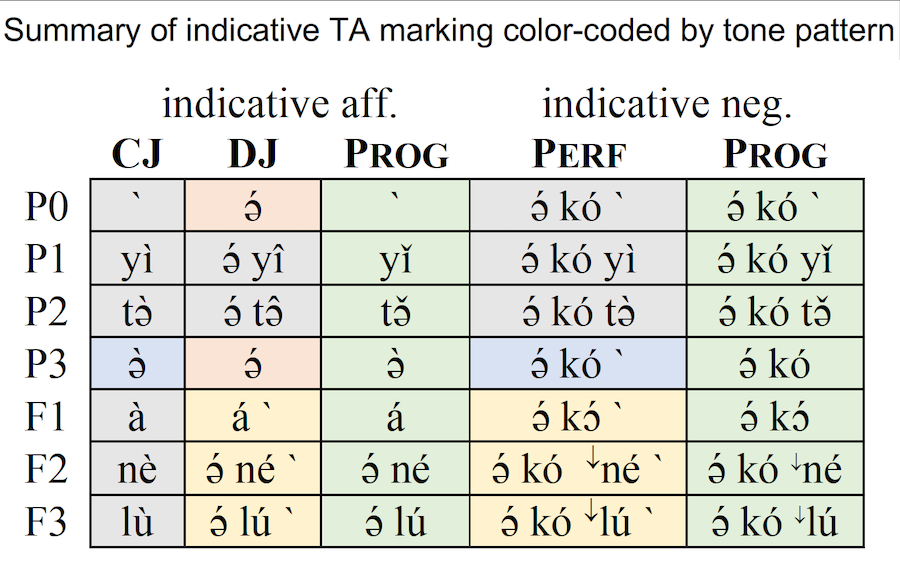The segmental and tonal structure of verb inflection in Babanki
DOI:
https://doi.org/10.3765/pda.v2art2.32Keywords:
tonal melodies, grammatical tone, verb inflection, tonal paradigms, conjoint, disjointAbstract
In this study we provide a comprehensive phonological and morphological analysis of the complex tense-aspect-mood (TAM) system of Babanki, a Grassfields Bantu language of Cameroon. Our emphasis is on the competing inflectional tonal melodies that are assigned to the verb stem. These melodies are determined not only by the multiple past and future tenses, perfective vs. progressive aspect, and indicative vs. imperative, subjunctive, and conditional moods, but also affirmative vs. negative and “conjoint” (CJ) vs. “disjoint” (DJ) verbal marking, which we show to be more thorough going than the better known cases in Eastern and Southern Bantu. The paper concludes with a ranking of the six assigned tonal melodies and fourteen appendices providing all of the relevant tonal paradigms.

Downloads
Published
How to Cite
Issue
Section
License
Published by the LSA with permission of the author(s) under a CC BY 3.0 license.



